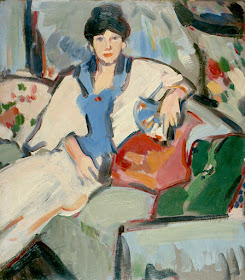I first stumbled upon the Scottish Colourists in 2006 while visiting the Scottish National Gallery of Modern Art in Edinburgh. My study of art history took place primarily in the states where I'd never heard of them. Apparently, this was a true sentiment on both sides of the Atlantic until the 1980s. Initially, they did not comprise a huge spot in canon of Modern art, but have come to be appreciated as having an enormous influence on the Contemporary art of Scotland.
Their era was the 1920s and 1930s, having trained in France in the tradition of the Impressionist and Fauvists. They applied this learning to traditional Scottish painting, which was fond of landscape painted in the Realist sense, with almost always found the sky playing a major part in the stylized scenery.
A notable artist from the forefront of the movement was William McTaggart, a prominent landscape artist who was highly influenced by Post-Impressionism and is often referred to as a "Scottish Impressionist".
The Colourists picked up where the Glasgow Boys left off, a group of Modern artists based out of Glasgow towards the end of the 19th cenury. Brought together by a mutual dislike for the Edinburgh art establishment whom they found both oppressive and elitist, they banded together through their desire to create art that combined realism and naturalism.
Cadell, Hunter, Fregusson and Peploe were among the Colourists who brought the vibrant colours of the French Fauvists to their work.
The Colourists began to fall out favor as WWll and Expressionism approached. A new appreciation for their work allowed for a renaissance of sorts in the 1980s.


No comments:
Post a Comment